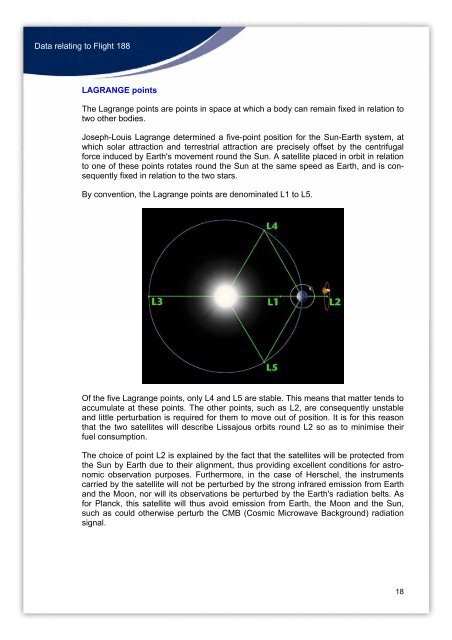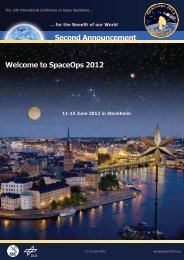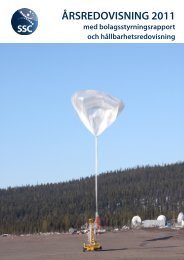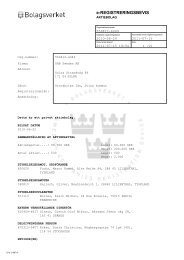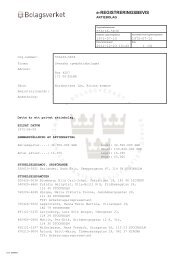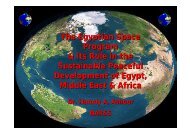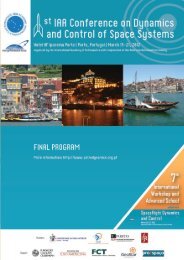Flight 188 - uppsagd
Flight 188 - uppsagd
Flight 188 - uppsagd
You also want an ePaper? Increase the reach of your titles
YUMPU automatically turns print PDFs into web optimized ePapers that Google loves.
Data relating to <strong>Flight</strong> <strong>188</strong>LAGRANGE pointsThe Lagrange points are points in space at which a body can remain fixed in relation totwo other bodies.Joseph-Louis Lagrange determined a five-point position for the Sun-Earth system, atwhich solar attraction and terrestrial attraction are precisely offset by the centrifugalforce induced by Earth's movement round the Sun. A satellite placed in orbit in relationto one of these points rotates round the Sun at the same speed as Earth, and is consequentlyfixed in relation to the two stars.By convention, the Lagrange points are denominated L1 to L5.Of the five Lagrange points, only L4 and L5 are stable. This means that matter tends toaccumulate at these points. The other points, such as L2, are consequently unstableand little perturbation is required for them to move out of position. It is for this reasonthat the two satellites will describe Lissajous orbits round L2 so as to minimise theirfuel consumption.The choice of point L2 is explained by the fact that the satellites will be protected fromthe Sun by Earth due to their alignment, thus providing excellent conditions for astronomicobservation purposes. Furthermore, in the case of Herschel, the instrumentscarried by the satellite will not be perturbed by the strong infrared emission from Earthand the Moon, nor will its observations be perturbed by the Earth's radiation belts. Asfor Planck, this satellite will thus avoid emission from Earth, the Moon and the Sun,such as could otherwise perturb the CMB (Cosmic Microwave Background) radiationsignal.18


